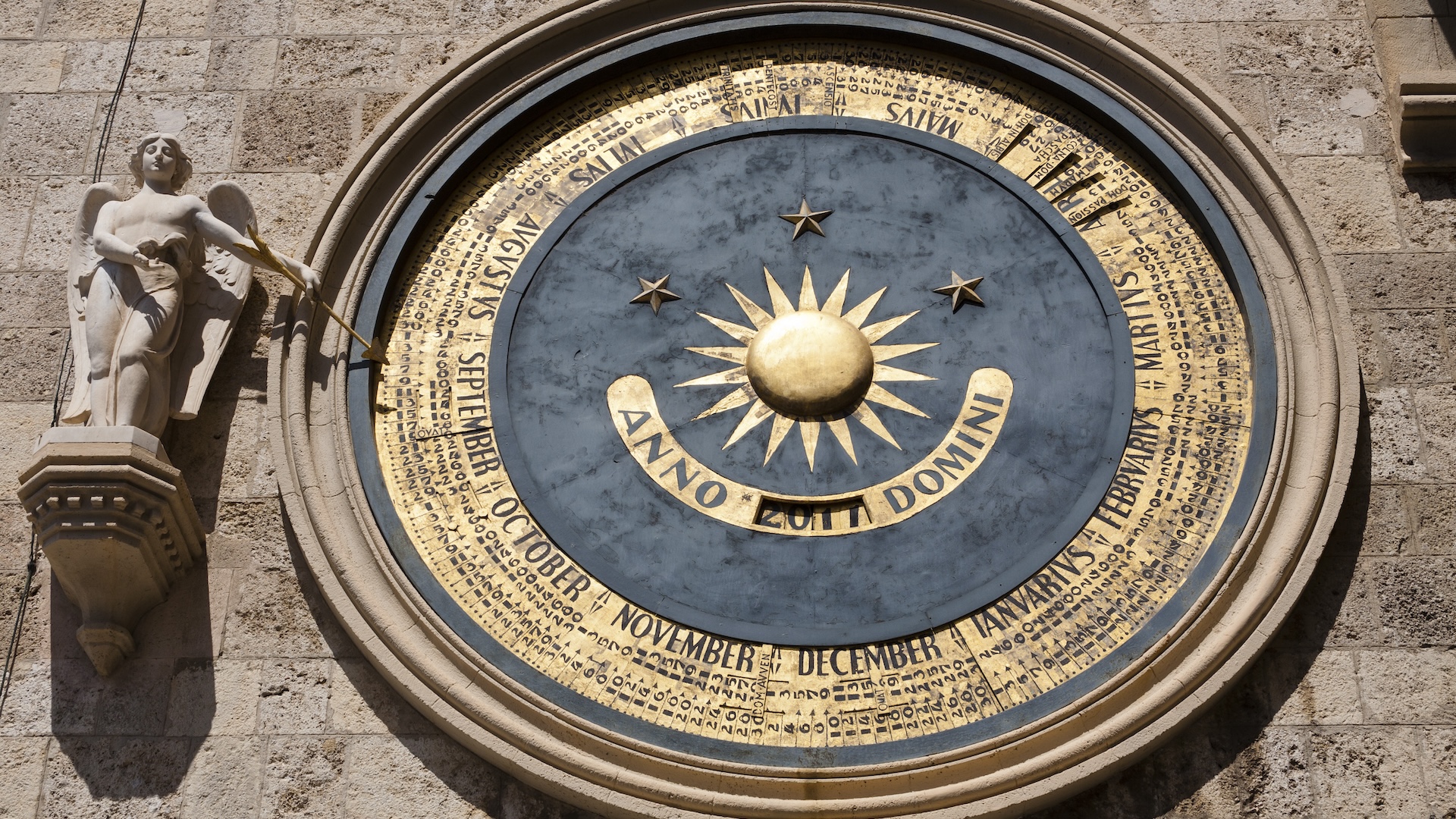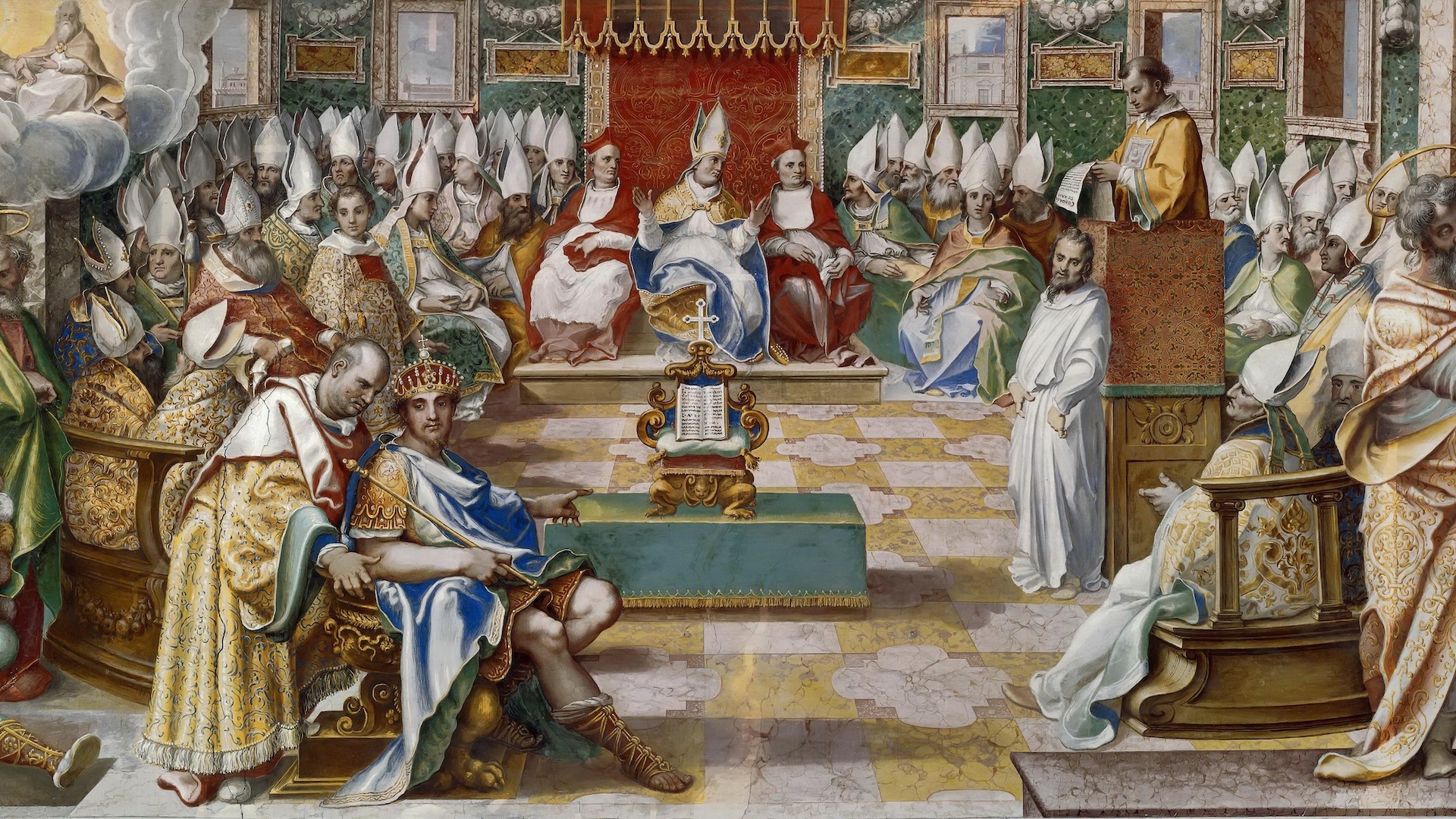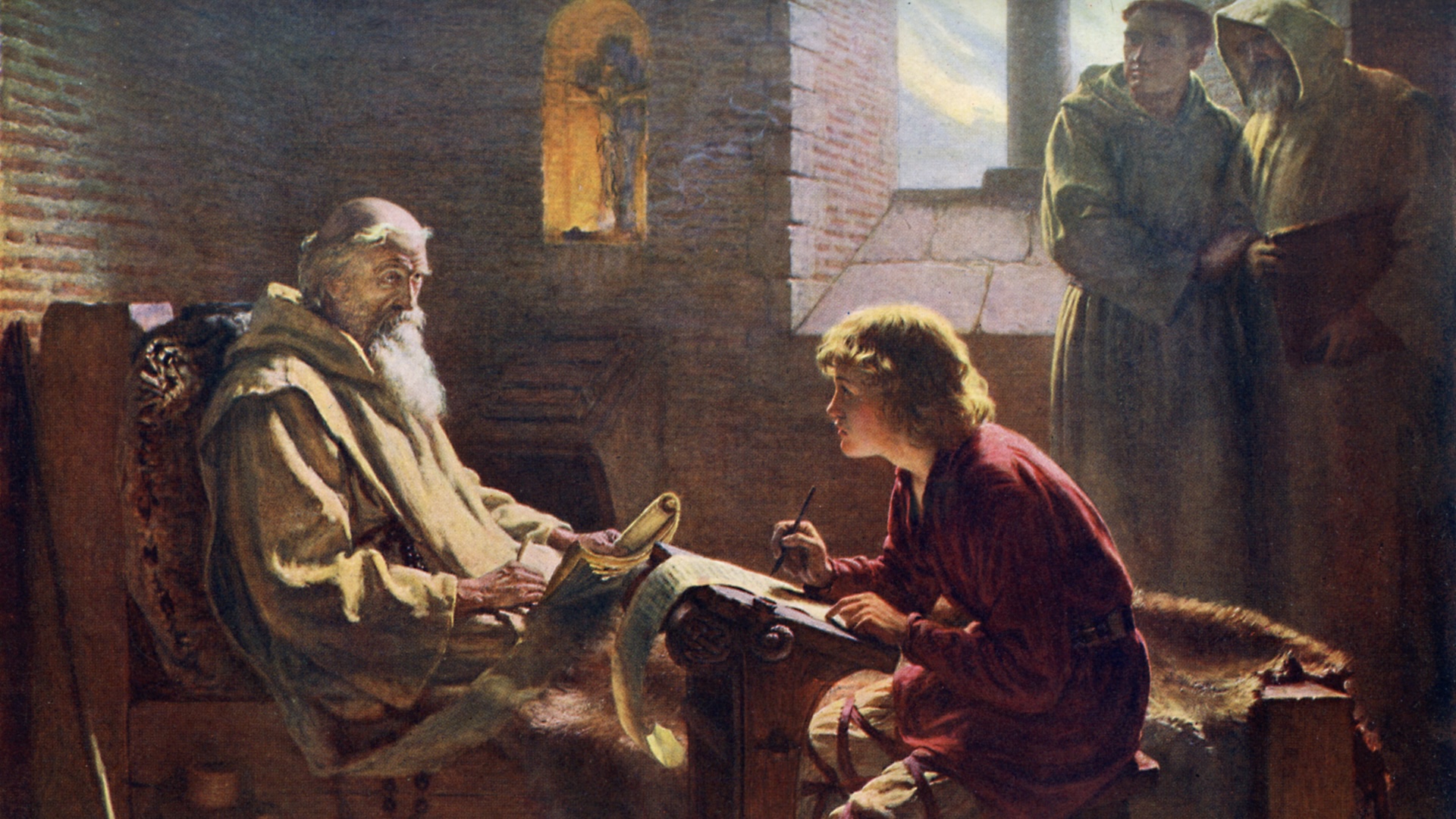Keeping time: The history, origin and meanings of B.C. and A.D.
The use of "anno domini" and "before Christ" to mark time began in the early days of Christianity, and they're still used to track calendar years today.

When reading historical texts or delving into archaeology stories, it's common to see "A.D." and "B.C." added to dates. These common terms divide time before and after the birth of Jesus Christ, though they may also be swapped out for the more-secular "C.E" and "B.C.E." But what do "A.D" and "B.C." actually mean, and where did they come from?
What does A.D. stand for?
"A.D." stands for anno domini (Latin for "in the year of the lord"), and it refers specifically to the birth of Jesus Christ. "B.C." stands for "before Christ."
The system labels years based on a traditional notion of when Jesus was born — with "A.D." denoting years after his birth and "B.C." designating the years that predate his birth.
In English, it is common for "A.D." to precede the year, so that the translation of "A.D. 2024" would read "in the year of our lord 2024." In recent years, an alternative form of B.C./A.D. has gained traction. Many publications use "C.E.," or "common era," and "B.C.E.," or "before common era" in order to make non-Christians more comfortable using the system. Before we talk about how and why the system was invented, let's get some historical context.
When was A.D. invented?
In early Middle Age Europe, the most important calculation and one of the main motivations for studying mathematics was the problem of when to celebrate Easter, the holiday that celebrates the resurrection of Jesus Christ. In A.D. 325, the First Council of Nicaea decided that Easter would fall on the Sunday after the full moon following the spring equinox. Computus (Latin for "computation") was the procedure for calculating this most important date, and the computations were set forth in documents known as Easter tables.
On one of these tables in A.D. 525, a monk named Dionysius Exiguus of Scythia Minor (also known as Dennis the Small) started counting the years since the birth of Christ and introduced the A.D. system, Georges Declercq, a history instructor at Vrije Universiteit Brussel, wrote in in the journal Sacris Erudiri.
Dionysius never said how he determined the date of Jesus' birth, but he may have used surviving writings from early Christians, such as Clement of Alexandria or Eusebius of Caesarea, to help estimate the date, according to Alden Mosshammer, an emeritus professor of history at University of California at San Diego, in his book "The Easter Computus and the Origins of the Christian Era" (Oxford, 2008). Dionysius attempted to set A.D. 1 as the year of Jesus Christ's birth, but was off in his estimation by a few years, with modern estimates placing Christ's birth between 4 B.C. and 6 B.C.
Get the world’s most fascinating discoveries delivered straight to your inbox.
What was the time system before A.D.?
Dionysius devised his system to replace the Diocletian system, named after the Roman Emperor from A.D. 284 to A.D. 305. This system used the number of years since Diocletian became the emperor of Rome. The first year in Dionysius' Easter table, Anno Domini 532, followed the year Anno Diocletiani 247.
Dionysius made the change specifically to do away with the memory of Diocletian, who had harshly persecuted Christians. Diocletian issued edits that resulted in the killing or imprisonment of many Christians and the burning of their churches and scriptures, wrote E. Glenn Hinson, a retired professor of church history at the Southern Baptist Theological Seminary in Louisville, Kentucky, in his book "The Early Church: Origins to the Dawn of the Middle Ages" (Abingdon Press, 2010).
When was B.C. invented?
The addition of B.C. happened two centuries after Dionysius, when the Venerable Bede of Northumbria published his "Ecclesiastical History of the English People" in 731, wrote Antonia Gransden, a reader in history at the University of Nottingham, in her book "Historical Writing in England: c. 500 to c. 1307" (Routledge, 1997). The work brought the A.D. system to the attention of more people and expanded it to include years before A.D. 1. Prior years were numbered to count backward to indicate the number of years an event had occurred "before Christ" or "B.C."
Why is there no year zero?
There was no "year zero" in Bede's updated system because the concept of the number zero had not appeared in Western Europe. "To Bede, also ignorant of the number zero, the year that came before 1 A.D. was 1 B.C. There was no year zero. After all, to Bede, zero didn't exist," wrote Charles Seife, a professor and director of the Arthur L. Carter Journalism Institute at New York University, in his book "Zero: The Biography of a Dangerous Idea" (Penguin Books, 2000).
However, zero did exist elsewhere; our modern conception of zero was first published in A.D. 628 by the Indian scholar Brahmagupta, although earlier cultures also had concepts of zero, including the Babylonians and Maya. The idea would not spread to medieval Christian Europe until the 11th to 13th centuries.
When were A.D. and B.C. commonly adopted?
The B.C./A.D. system became more popular in the ninth century after Holy Roman Emperor Charlemagne adopted the system for dating acts of government throughout Europe.
By the 15th century, all of Western Europe had adopted the B.C./A.D. system. The system's inclusion was implicit in the 16th-century introduction of the Gregorian calendar and it later would become an international standard in 1988 when the International Organization for Standardization released ISO 8601, which describes an internationally accepted way to represent dates and times.

What's the difference between B.C. and B.C.E?
Some individuals and organizations, including many academics, have switched to the terminology B.C.E. ("Before Common Era") and C.E. ("Common Era") in lieu of B.C and A.D. There are a number of reasons for this transition. These include showing sensitivity to non-Christians, and the fact that A.D and B.C. are probably factually inaccurate, since scholars generally believe that Christ was born some years before A.D. 1.
The terms C.E. and B.C.E date back to 1715, where they were used in an astronomy book interchangeably with "Vulgar Era." At the time, vulgar meant "ordinary," rather than "crude." The term "Vulgar Era" is even older, first appearing in a 1615 book by Johannes Kepler.
Additional resources
Read more about the date and time format used by ISO. You can also learn more about Dionysius Exiguus and his computational methods from Mosshammer's book. Finally, explore WebExhibits' online resource about the Gregorian Calendar, which includes an easy-to-read history and answers to related questions, such as "What is the origin of the names of the months?".
Editor's note: This article was originally published on July 3, 2014 and updated on Jan. 14, 2022 and Oct. 24, 2024.
Robert Coolman, PhD, is a teacher and a freelance science writer and is based in Madison, Wisconsin. He has written for Vice, Discover, Nautilus, Live Science and The Daily Beast. Robert spent his doctorate turning sawdust into gasoline-range fuels and chemicals for materials, medicine, electronics and agriculture. He is made of chemicals.
- Marilyn PerkinsContent Manager




